Stubborn fat (subcutaneous fat) vs visceral fat
Are you looking to lead a healthier lifestyle or want to lose weight? When researching, you may have encountered terms such as Visceral and Subcutaneous. Subcutaneous fat and visceral fat play diverse roles within our bodies. Recognising their differences is crucial to develop effective strategies to manage and maintain a healthy weight. Let’s take a closer look at visceral fat vs subcutaneous fat, exploring their characteristics, implications, and how to reduce visceral fat and subcutaneous fat.
What is visceral fat and why is it so dangerous?
Visceral fat is the body fat stored around several organs in the abdominal cavity, including the liver, pancreas, and intestines. Unlike subcutaneous fat, visceral fat poses a more significant threat to your health. It stops your organs from functioning properly as they restrict the organs’ movement by putting pressure on them. Higher amounts of visceral fat are associated with conditions like coronary heart disease, sleep disorders, cancer, stroke, diabetes, obesity, insulin resistance, dyslipidemia etc.
Visceral fat, often known as “deep belly fat,” is not as visible as subcutaneous fat, meaning many individuals may not be aware they have excessive visceral fat until they face health complications. In women, a waist measurement of 35 inches or higher is generally a sign of excess visceral fat. In men, it’s 40 inches or higher.
How can you lower your visceral fat?
If you’re looking for strategies on how to lose visceral fat, you can:
- Avoid trans fats — Replace saturated fats with healthier options like monounsaturated and polyunsaturated fats from healthy food sources like avocados, nuts, seeds, and fatty fish.
- Increase your protein intake — A higher protein intake increases your satiety levels (appetite-reducing) hormones to help you lose weight.
- Reduce your alcohol intake — Alcohol can cause weight gain in four ways — it prevents your body from burning fat, is high in kilojoules, can make you feel hungry, and leads to salty and greasy food cravings. Limit alcohol intake and always drink in moderation. Never go cold turkey, as this may cause an adverse reaction.
- Slowly reduce sugar intake — Studies show a relationship between a high sugar intake and increased abdominal fat. You should limit your intake of candy and processed foods that are high in added sugar and consume natural sugars like honey in moderation. Never go cold turkey, as this may cause an adverse reaction.
- Go for high-intensity interval training (HIIT) — Get active with high-intensity interval training (HIIT) & resistance training. F45 is a great way to stay in shape and a better place to start your fitness journey. Alternatively, you can attend a HIIT class at your local gym or complete a YouTube workout from home — the possibilities are endless! These short bursts of intense exercise followed by rest periods can rev up metabolism and burn fat.
- Get plenty of sleep — A randomised controlled study led by Naima Covassin, PhD, a cardiovascular medicine researcher at Mayo Clinic, demonstrates that lack of sufficient sleep can lead to a 9% increase in abdominal fat area and an 11% increase in abdominal visceral fat, compared to controlled sleep.
- Practise stress management — Chronic stress can contribute to visceral fat accumulation. Engage in relaxation techniques such as meditation, deep breathing, or yoga.
Will body contouring treatments such as Cryolipolysis, Radio frequency, Coolsculpting, SculpSure, and Cavitation help reduce visceral fat?
Unfortunately, no. Body contouring treatments do not affect your visceral fat. Taking active steps to address various life factors, from your sleep to your diet and exercise regime, is how to reduce visceral fat from your body.
Measure your visceral fat at Elite Body Contouring
Are you wanting to check in and see if your diet and exercise are on track? With an InBody composition scan at Elite Body Contouring, you can find over 40 body composition parameters, including muscle mass, body fat, visceral fat, and bone mineral content.
Knowing the amount of body fat and muscle mass within your body is a great way of assessing whether your nutritional choices and exercise work for your body. Unlike other measurements like the Body Mass Index (BMI), your “fat to weight” ratio accounts for your overall body composition. The InBody 770 body scan allows us to separate and segment your body fat from other factors affecting your overall weight like your muscle, bone, and water. This method is trusted by top hospitals and used for medical research, patient monitoring, sports medicine, and sports science.
Total body weight alone is not a clear indication of a person’s overall health, as it does not distinguish between the amount of fat or lean mass the body is fundamentally composed of. This device is highly effective, precise, and provides in-depth results in less than two minutes.
Elite Body Contouring Clinic in Rosebery is one of the only body contouring clinics with an InBody composition scanner to track your progress and ensure you are on the right track with your diet and exercise.
What is subcutaneous fat?
Subcutaneous fat, often referred to as “stubborn fat,” is the stubborn pockets of fat located underneath the surface of the skin (epidermis) that everyone has. While subcutaneous fat might not be as concerning from a health perspective as visceral fat, it’s still a significant aspect of body composition. One of its key functions is insulation, helping to regulate body temperature.
Despite its less severe health implications than visceral fat, many individuals find subcutaneous fat difficult to shed. This is due to its stubborn nature, often requiring targeted and consistent efforts to reduce. Common areas where subcutaneous fat accumulates include the thighs, buttocks, and abdomen, leading to cellulite and excess fat pockets. The amount of subcutaneous fat each individual will have will depend on genetics, diet, and exercise.
Can subcutaneous fat be treated with non-surgical body contouring treatments?
Unlike visceral fat, subcutaneous fat can be treated with fat reduction body contouring treatments such as:
Our fat cavitation treatment targets your deep fat using ultrasound technology to safely liquify the fat, resulting in your body removing the fat through its own natural removal process. Throughout your treatment, you must monitor your visceral fat levels by maintaining a healthy, balanced diet, staying active and hydrated, maintaining sleep, and managing stress to maximise your treatment results.
This treatment’s average clinical endpoint is around 12 weeks, so your body can flush out all the toxins released from its fat cells naturally. Our professional team of clinicians will monitor your results with our InBody Composition Scans and ensure you remain on track to achieve your goals.
Radio frequency (RF) fat melting uses RF waves to heat the subcutaneous fat, causing it to melt, resulting in your body removing the fat through its own natural removal process. It does this by penetrating the skin and heating the collagen-rich dermis above 60°C degrees to disrupt the fat cell membrane. This treatment offers a safe, pain-free, low-cost solution to help shrink stubborn fat cells where diet and exercise alone are simply not doing the trick.
This quick and convenient treatment can be completed in under an hour, minus the downtime or recovery, so you can easily schedule an appointment during your lunch break. This treatment has been used for over 20 years, providing a clinically proven and safe method to target subcutaneous fat without surgery. If you’re concerned about cellulite, RF Fat Melting can be used with our cellulite reduction treatments to help flatten and melt stubborn fat cells, smoothing your skin texture.
Cryolipolysis Fat Freezing uses a low-temperature technology to permanently destroy the fat cells within the targeted area, resulting in pocket reduction. Our CoolShaping technology is clinically proven to permanently reduce stubborn fat in treatment areas by 20-40% per session, minus the pain and recovery time that come with surgical alternatives.
Cavitation, Radiofrequency fat melting, and Cryolipolysis are all non-surgical, non-invasive, pain-free, and require-no-downtime treatments that safely and effectively reduce the subcutaneous fat for a more toned body.
Book a free consultation with Elite Body Contouring to treat subcutaneous fat
Recognising the differences between stubborn subcutaneous fat vs visceral fat is essential for adopting a targeted and effective approach to weight management and overall health. While subcutaneous fat might persist more, visceral fat poses more significant health risks. By adopting a balanced diet, regular exercise regimen, and stress management techniques, you can embark on a journey towards a healthier you.
Body sculpting treatments at Elite Body Contouring are a safe and natural way to help you take control and address stubborn unwanted pockets of subcutaneous fat and get you on your way to a healthier you. Book a free consultation to discuss your treatment options — our professional clinicians are invested in your journey and will be there every step of the way to track your progress.
Don’t forget to like our page on Facebook for regular updates and special offers!





You must be logged in to post a comment.